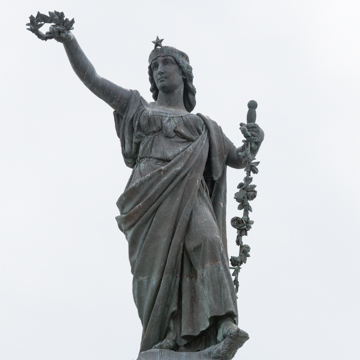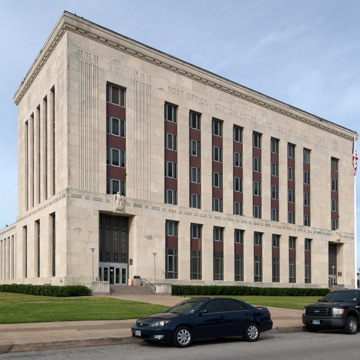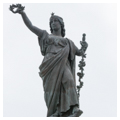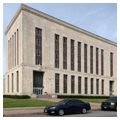Rising at the ceremonial center of Galveston—where the city's two original boulevards intersect—the Texas Heroes Monument was built with a bequest from Henry Rosenberg. The monument celebrates the independence of Texas from Mexico: the bronze figure of Victory extends her laurel crown northward up the axis of Rosenberg Avenue toward the plain of San Jacinto, near the northwest corner of Galveston Bay, where the climactic battle between Texas and Mexico was fought on April 21, 1836. The bronze figural statuary and relief plaques and the light gray granite architectural components are by Amateis.
North of the monument are two public buildings occupying full-block fronts that sought to claim the street as a civic thoroughfare: the four-story Galveston City Hall (1916) by Dallas architects C. D. Hill and Company at 823 Rosenberg Avenue and the six-story U.S. Post Office, Custom House, and Court House (1937) by Alfred C. Finn of Houston and Andrew Fraser of Galveston at 601 Rosenberg.









